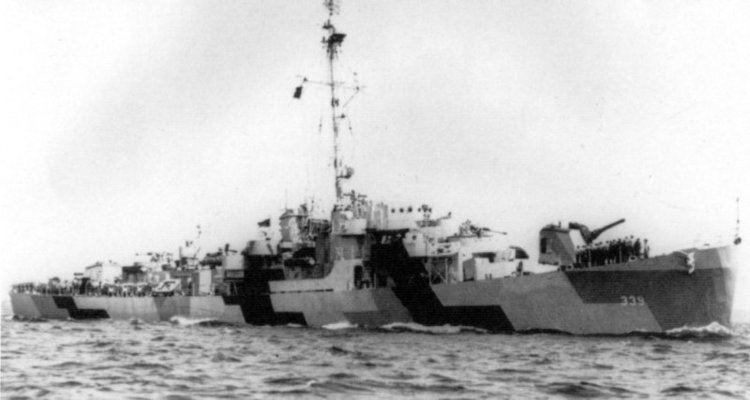Succeeded by Dealey class Completed 83 | Preceded by Rudderow class Planned 293 | |
 | ||
Operators | ||
The John C. Butler class were destroyer escorts that originated during World War II. The lead ship was USS John C. Butler, commissioned on 31 March 1944. The class was also known as the WGT type from their Westinghouse Geared turbine drive.
Of the 293 ships originally planned, 206 were canceled in 1944 and a further four after being laid down; three were not completed until after the end of World War II.
History
The standard armament for the class was two 5 in (127 mm) dual purpose guns, four 40 mm and ten 20 mm anti-aircraft guns, and three 21 in (533 mm) torpedo tubes. It also carried two depth charge racks, eight depth charge projectors and one hedgehog projector as secondary weapons. The ships had a maximum speed of 24 kn (28 mph; 44 km/h).
The most notable ship of this class was Samuel B. Roberts, which gained fame during the Battle of Leyte Gulf, where it, along with several other ships engaged a number of cruisers and battleships of the Imperial Japanese Navy in a torpedo attack, where it was sunk after taking several hits. During this action, Samuel B. Roberts achieved a speed of 28.7 kn (33.0 mph; 53.2 km/h) for over an hour by running her engines at 660 psi (46 bar). The other two ships of this class lost were USS Shelton and USS Eversole.
Also notable was Tabberer for which Captain Henry Lee Plage earned the Legion of Merit, while the entire crew earned the Navy's Unit Commendation Ribbon for taking the initiative to rescue other ships after a disastrous storm. In December 1944, the ship lost her mast and radio antennas riding out Typhoon Cobra, which killed 790 sailors (more than were lost at the battles of Midway and Coral Sea combined). Though damaged and unable to radio for help, she was first on the scene to recover 55 of only 93 total rescued from three destroyers which capsized in the heavy seas.
A floating history museum of the destroyer escorts resides in Albany, New York. USS Slater (a related Cannon-class destroyer escort) is docked during temperate months on the Hudson River in Albany, New York. An Edsall-class destroyer escort, USS Stewart, is also on display as a museum ship in Galveston, Texas.
